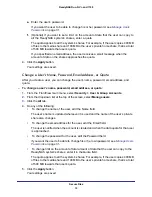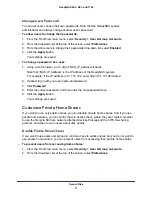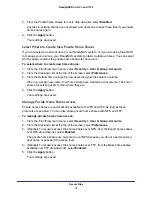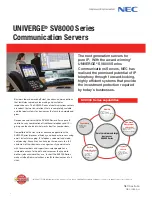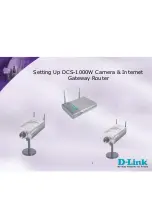
Manage Storage Space
17
ReadyNAS Duo, NV+, and 1100
X-RAID and Flex-RAID
Your ReadyNAS system gives you two ways to choose which type of RAID technology to
use: X-RAID and Flex-RAID.
•
X-RAID
. NETGEAR’s proprietary single-volume architecture that automatically chooses
which type of RAID set is best depending on the number of disks in your ReadyNAS
system. X-RAID chooses to protect your data against disk failure whenever possible. If
your ReadyNAS system contains two or more disks and a disk fails, no files are lost and
users can continue to access the ReadyNAS system as normal. When you add a disk to
your ReadyNAS system, it is formatted in the background while users continue to access
your unit.
•
Flex-RAID.
Offers more flexibility because it lets you choose how many volumes to
create, which type they should be, and whether to use a disk as a hot spare. (If another
disk fails, the hot spare automatically replaces it.) With Flex-RAID, adding a disk to a
volume takes more work than with X-RAID because you need to take your system offline
as you manually back up your data, add the disk, and restore your data.
Manage Your Storage Space with X-RAID
X-RAID is the default disk management system for ReadyNAS NV+ and ReadyNAS Duo. It
chooses which type of RAID set is best for you depending on the number of disks in your
ReadyNAS system, protecting your data against disk failure whenever possible.
With one disk installed, X-RAID uses all its capacity for storage. But if the disk fails, you lose
all your files.
WIth two or more disks installed, you are protected against disk failure. With just two disks,
the disks are mirrored: Each disk holds a complete copy of your data. With three or four
disks, one disk’s worth of capacity contains information that is used to recover your files in
case of disk failure, and the rest of the capacity is available for storing. The capacity of a
ReadyNAS system with X-RAID is determined by the number of disks installed, as follows:
•
If your system has two disks, you have one disk’s worth of storage space.
•
If your system has three disks, you have two disks’ worth of storage space.
•
If your system has four disks, you have three disks’ worth of storage space.
When you add a disk, your ReadyNAS system automatically formats it in the background and
adds it to the X-RAID volume while users continue to access the unit normally. If you have at
least two disks installed, when a disk fails, the administrator receives an email message to
replace the disk as soon as possible. Meanwhile, users can continue to access the
ReadyNAS system.
If all the disk bays in your ReadyNAS system are filled, you can still expand your storage
space. Just replace all the disks with larger ones, one at a time.




























